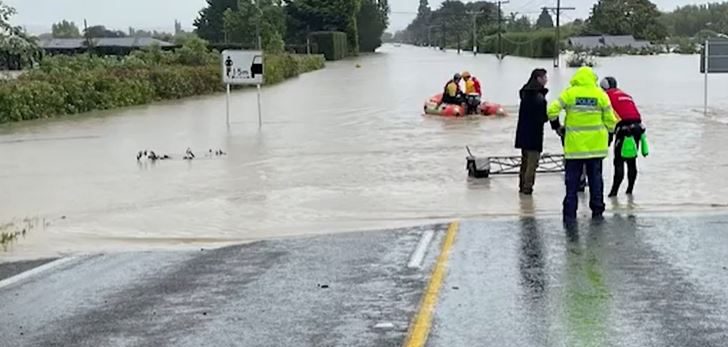In New Zealand, recent natural disasters like the Auckland Anniversary floods and Cyclone Gabrielle have led to a surge in insurance claims, costing more than $3.5 billion. In fact, over 112,000 claims were filed just from these two events alone. The Canterbury earthquakes were even more costly, with insurance payouts reaching $21 billion.
Increasing Risks for Homeowners

Due to the frequency and severity of these natural disasters, many homes in certain areas are becoming either uninsurable or very difficult to insure. Insurance companies are finding the risks too high and are pulling out of these high-risk areas, leaving homeowners vulnerable and without coverage. This raises a critical question: how can insurers continue to provide coverage while managing the increasing risks posed by natural disasters?
The Role of Insurers and the Government
In New Zealand, there’s no law requiring insurers to cover every home, except in the case of body-corporate groups that manage multiple units. Mortgage lenders often require borrowers to have home insurance, but beyond that, it’s up to the insurer whether to provide coverage.
When homeowners do get insurance, certain risks from natural disasters are automatically covered by the Natural Hazards Commission (formerly the Earthquake Commission). Even if an insurance policy seems to exclude natural disaster coverage, the law still considers it included, but the payouts are handled by the commission, not the insurers.
Challenges for Insurers
The massive payouts from events like the Canterbury earthquakes and the growing threat of future disasters have made insurers more cautious. They’re increasingly refusing to insure homes in high-risk areas. However, starting in mid-2025, insurers will have a general duty to “treat consumers fairly.” This means the Financial Markets Authority (FMA) could force insurers to offer coverage to more homes, even in risky areas.
New Insurance Solutions
To adapt to these changes, insurers will need to explore new ways of offering coverage. One idea is to encourage homeowners to make their homes more disaster-resistant by offering lower premiums as a reward. If homeowners don’t make these improvements, insurers might raise premiums or limit payouts, using customized policies with specific terms.
Another option is “parametric” insurance, which is different from traditional insurance. Instead of paying out based on the actual damage caused, parametric insurance pays a pre-agreed amount if a specific event, like an earthquake of a certain magnitude, occurs. This type of insurance is faster and simpler but may offer lower payouts.
Sharing and Transferring Risk
Insurers can also share the risk with other companies through “reinsurance” or “co-insurance.” Reinsurance involves one insurer transferring part of the risk to another insurer. If a claim is made, the reinsurer helps cover the payout. Co-insurance means that multiple insurers each cover a portion of the risk.
Another innovative solution is using “catastrophe bonds” or “cat bonds.” In this scenario, insurers get capital from investors who lend them money in exchange for interest. If a natural disaster occurs, the insurer can keep the money to pay out claims. If not, they repay the investors. This system can even create a “virtuous cycle,” where the insurer reinvests the money into projects that reduce the risk of future disasters, like flood prevention.
Working Together to Manage Risks
The future of home insurance in New Zealand will depend on cooperation between the public and private sectors. Both need to work together to make natural disasters less frequent and less severe. The United Nations’ Intergovernmental Panel on Climate Change (IPCC) has provided guidelines on how to reduce climate-related risks, but there is still much work to be done, especially regarding earthquake preparedness.
Building homes that are better equipped to withstand natural disasters is crucial. Additionally, addressing the high cost of housing in New Zealand is essential. If people didn’t have to invest so much in their homes, the financial impact of natural disasters would be less devastating.
In conclusion, while the insurance industry faces significant challenges due to the increasing risk of natural disasters, there are innovative solutions on the horizon. By working together, New Zealand can find ways to ensure that homeowners are protected, even in the face of growing threats.


